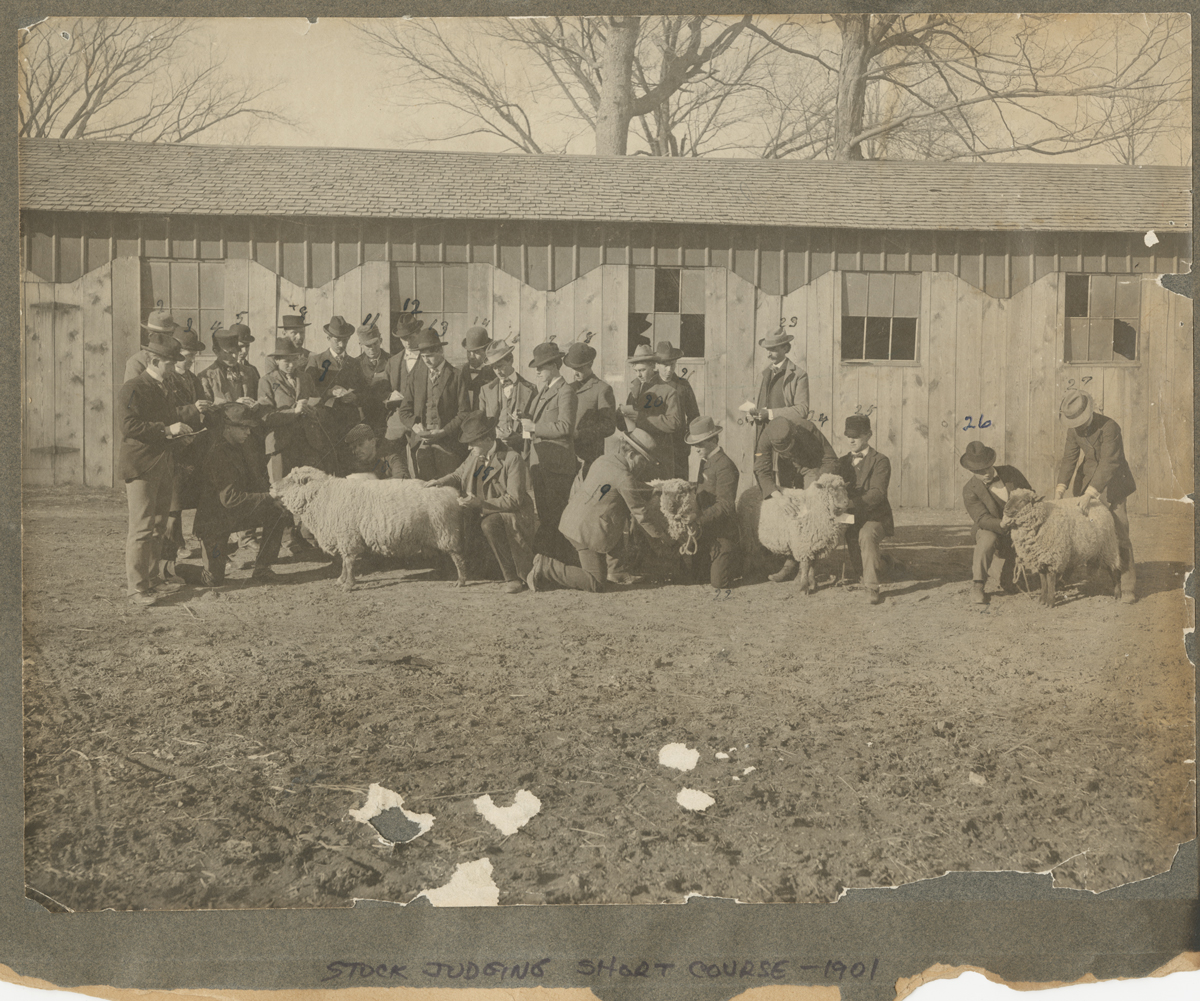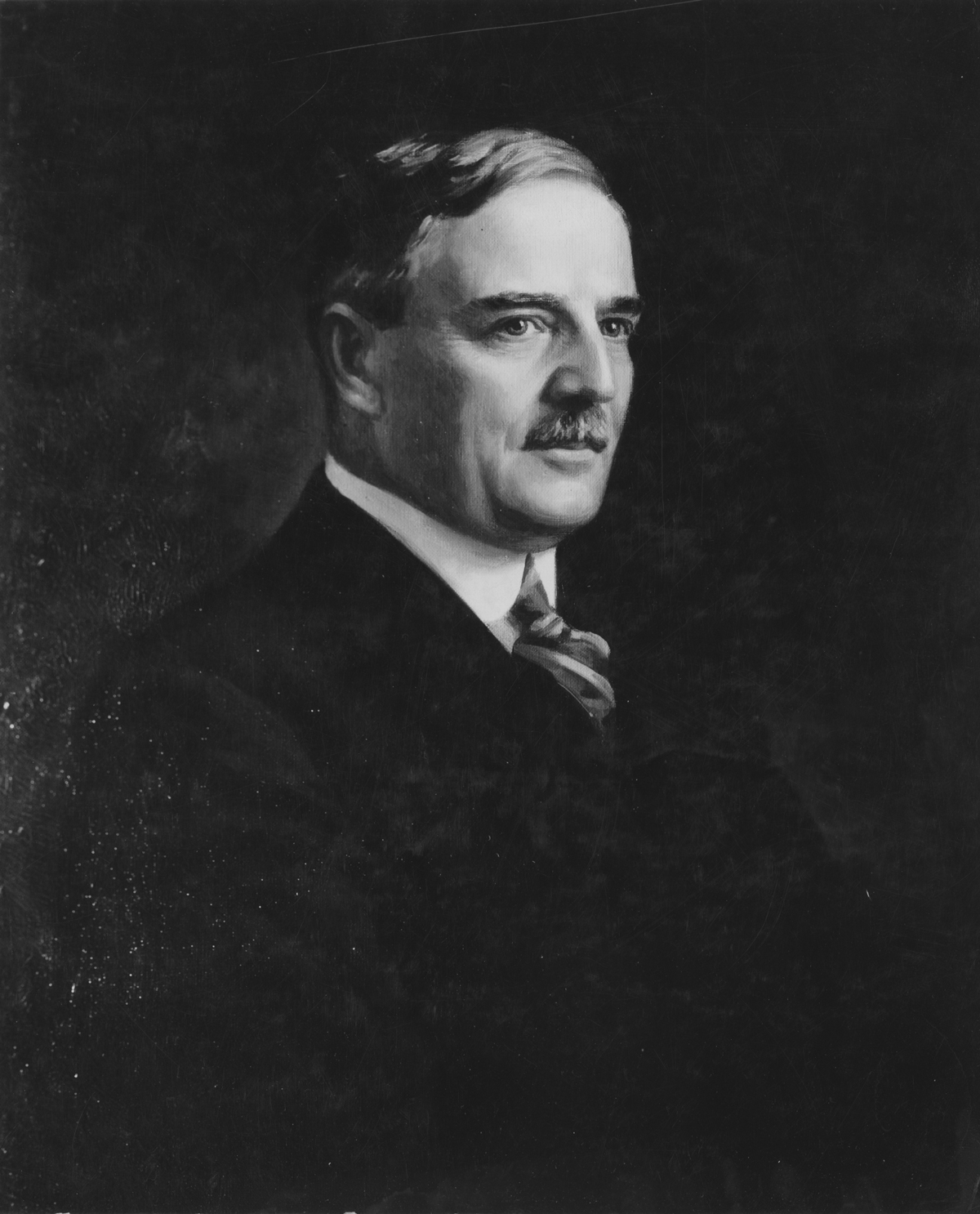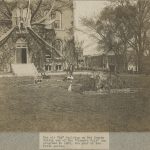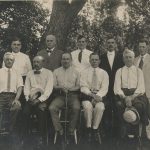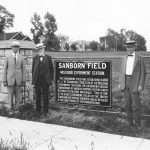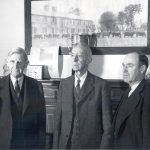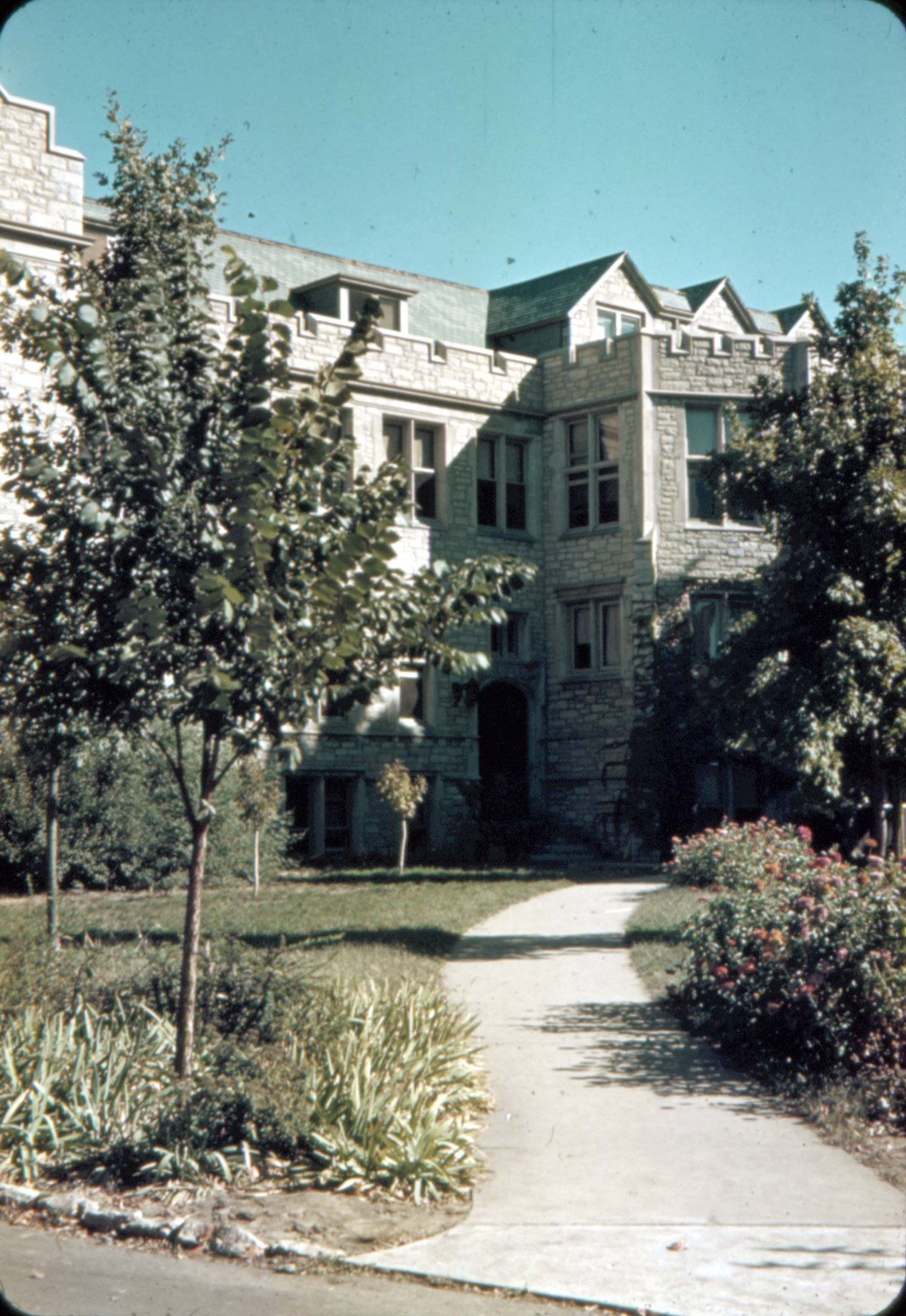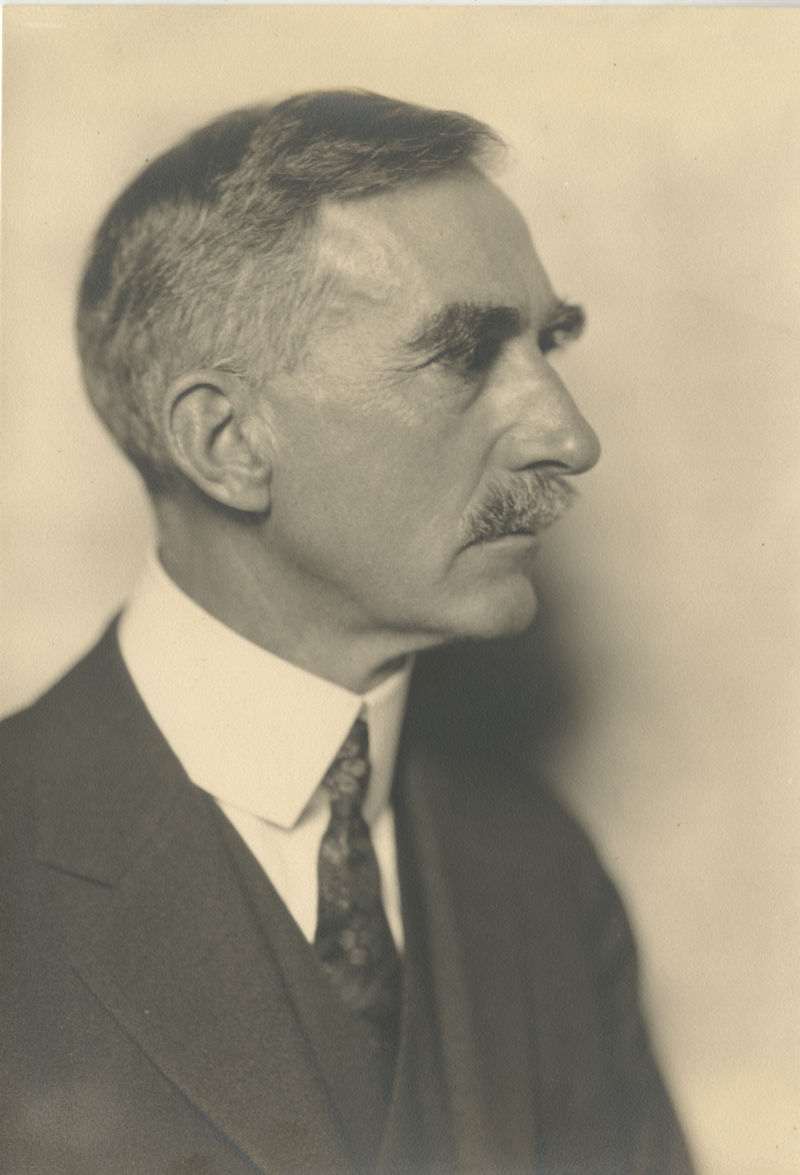
Frederick B. Mumford
Introduction
Frederick B. Mumford was an important figure in the history of US and Missouri agriculture. While he may be best known today for the building on the University of Missouri campus named after him, Mumford helped the university’s College of Agriculture grow into a highly regarded program while he was dean from 1909 to 1938.
Early Years and Education
Frederick Blackmar Mumford was born May 28, 1868, to Elisha Charles and Julia Ann Mumford on a 400-acre farm near Moscow, Michigan. He had one brother, Herbert Windsor, and the two completed their education together in a one-room schoolhouse. They later attended Hanover High School in Hanover, Michigan, before entering Albion College in Albion, Michigan, in 1887. In 1890, Frederick and Herbert left Albion and entered Michigan Agricultural College (MAC) in Lansing, where they both earned Bachelor of Science degrees in 1891.
Frederick Mumford then began graduate studies at MAC and was appointed as a research assistant at their agricultural experiment station. While obtaining his master’s degree, he traveled to farmers’ institutes for six weeks each winter to teach farmers new and improved methods of agricultural practice. He showed great promise as an animal scientist and helped strengthen MAC’s already prestigious animal science research program.
Completing his master’s in 1893, Mumford stayed at MAC as an assistant professor of agriculture for two years. During this time he taught courses in animal breeding, animal nutrition, soils and crops, and livestock judging and worked in cooperation with the experiment station.
In 1895, Dean Henry Waters of the University of Missouri College of Agriculture recruited Mumford as an associate professor in the Department of Animal Husbandry. Waters dreamed of building a world-class team of agricultural scientists and educators who would transform the struggling College of Agriculture into a major research center. He aggressively sought out the best and brightest talent in the field. Mumford, who was already being recruited by other agricultural schools across the country because of his work at MAC, was just the person Waters was looking for.
Mumford married Jessamine Kennedy in the same year that he was hired by the University of Missouri. The couple had four daughters together: Dorothy, Margaret, Ruth, and Catherine.
Coming to Missouri
Founded in 1870, MU’s College of Agriculture had had a difficult start—enrollment was small, teachers were limited, and appreciation for agricultural education was lacking. When Mumford arrived in Columbia in 1895, the agriculture program had a nine-animal farm herd and a library of four volumes. The students were largely viewed as those who could not meet the requirements of other schools at the university.
The College of Agriculture was under constant criticism, and its faculty struggled to convince the farmers of Missouri that it was a worthwhile institution. The program’s reputation had become so dire that in 1895 the state legislature seriously considered making it a separate institution from the university. While this effort was not successful, the College of Agriculture needed to gain more recognition, and the university’s administration earnestly set out to make it an institution where farmers could receive practical instruction and services.
Mumford taught twenty-four hours a week, providing courses on agricultural engineering, animal breeding, dairying, farm crops, feeds and feeding, history of breeds of livestock, judging livestock, soils, and advanced experiments in agriculture. During these early years, he also wrote Animal Husbandry, a textbook commonly used in the agricultural curriculum. Mumford quickly helped establish a strong reputation for the college and became professor of animal husbandry in 1905.
When Dean Waters left the university in 1909, Mumford was appointed to replace him. As dean, Mumford’s primary concern was getting the results of agricultural research experiments into the hands of farmers and gaining more acceptance for the study of scientific agriculture. He was able to achieve this in part due to the successes of the Agricultural Experiment Station and the Agricultural Extension Service.
Agricultural Extension Service
The Agricultural Experiment Station, established in 1887, was a division of the College of Agriculture whose staff researched improvement of field crops, animal nutrition, insect and animal diseases, and poultry farm management. To spread word of the latest scientific research for improving farming practices, all teachers in the college were required to lecture from four to six weeks each winter at farmers’ meetings statewide.
Some of the farmers who attended these “farmers’ institutes” told the faculty they wanted more information about specific farm practices. In response, “short courses” were started in Columbia. The courses allowed farmers to take advantage of the teachers and equipment at the College of Agriculture for free, with no expense for textbooks or requirements for admission. These classes, which could be completed in one month, took place in the winter when farmers could be spared from their duties.
To reach those farmers who could not come to Columbia or had been unable to attend short courses across the state, Mumford next developed a plan to lease special trains on the Burlington, Frisco, and Wabash railroads. The Frisco offered a scholarship in each of the 42 Missouri counties where the railroad had tracks. These “agricultural trains” traveled across the state in 1912, stopping at stations so that instructors from the university could teach farmers the latest information about crops and livestock. In 13 days, five men gave instruction to an estimated 93,800 people through 512 lectures at 98 stops.
Due to the success of these programs, college faculty members found that responding to the many requests to speak at farmers’ institutes required them to be away from campus so much that they did not have time to do their regular jobs. As a result, the university created an Agricultural Extension Service in 1912 that was designed to bring Experiment Station research to farmers across the state. The Extension Service employed representatives of the College of Agriculture, known as farm advisers, who devoted all of their time to helping farmers in their assigned county.
As an administrator, Mumford also created an environment that allowed others to carry out their research. History professor Jesse Wrench, a colleague and close friend of Mumford’s, said, “The US Department of Agriculture has noted more than once that more and better work for the money is done at Missouri than at any other experiment station. Although the dean [Mumford] insists that this is due more to the faithful work of his colleagues than to himself, anyone who knows the inside realizes that no small amount is due to his enthusiasm and careful management of research funds.”
World War I and the 1920s
In 1917, Mumford was selected by Missouri Governor Frederick D. Gardner to serve as chairman of the Missouri Council of Defense, whose wartime responsibilities included increasing farm production, reducing food consumption, and encouraging community gardening. Working with the University of Missouri’s Extension Service, the council was able to distribute informative pamphlets on how to grow greater quantities of wheat and corn. Mumford also focused on promoting food pledge campaigns such as “wheatless” days and other agriculture-based war efforts across Missouri. That same year, Mumford was also appointed the federal food administrator for the state.
After World War I ended, enrollment in the College of Agriculture increased rapidly, so university administration requested money from the Missouri General Assembly in 1921 to construct a new agricultural building. When the building was completed in 1924, it held the offices of the dean and director and the departments of animal husbandry, soils, agricultural economics, and rural sociology. Six years later, the building was renamed Mumford Hall.
Retirement and Death
By the time Mumford retired from the university in 1938, the Extension Service had grown to 339 employees and every county in the state was serviced by one or two extension agents. Mumford continued to stay active well into his seventies, becoming president of the Association of Land Grant Colleges and Universities in 1940 and volunteering for administrative wartime roles during World War II.
After the war ended in 1945, Mumford and his wife spent their winters in Florida and summers in Michigan, stopping in Columbia for a few weeks during the fall and spring. On one of these trips, the Mumfords were involved in a one-car accident five miles west of Wentzville, Missouri, on October 14, 1946. Jessamine Mumford was taken to St. Joseph Hospital in St. Charles, where she died soon after being admitted, while Dean Mumford stayed in serious condition for three weeks before his death on November 12.
Legacy
“Princes and lords may flourish and fade, but agriculture goes on forever.” —Frederick B. Mumford
During his forty-three-year career with the College of Agriculture, Mumford saw enrollment increase 1,800 percent. At the time of his retirement, more than 99 percent of students who had graduated from the college had done so while he was at the university. He had helped the college grow from two graduates a year to eighty-five a year and the agricultural library from four books to 25,000 volumes. When Mumford came to Missouri in 1895, the College of Agriculture occupied two buildings with 600 acres of poor land for agricultural experiments and research. By his retirement in 1938, there were more than 20 buildings and 1,600 acres of land. The Agricultural Extension Service he helped create served an estimated 175,000 Missouri farmers throughout his time as dean.
Mumford was significant in transforming the College of Agriculture from a struggling school to one of the top programs in the country. A capable administrator, he sought out highly qualified faculty, increasing their number from five to seventy-five during his tenure.
Mumford is honored today through the Mumford Awards, annual honors given to College of Agriculture faculty, staff, alumni, and friends for outstanding service, teaching, advising, and research.
Text and research by Aleksandra Kinlen
References and Resources
For more information about Frederick B. Mumford’s life and career, see the following resources:
Society Resources
The following is a selected list of books, articles, and manuscripts about Frederick B. Mumford in the research centers of The State Historical Society of Missouri. The Society’s call numbers follow the citations in brackets.
Articles from the Missouri Historical Review
- Christensen, Lawrence P. “World War I in Missouri. Part I.” v. 90, no. 3 (April 1996), pp. 330-354.
- Mumford, Frederick B. “A Century of Missouri Agriculture.” v. 15, no. 2 (January 1921), pp. 277-297.
Articles from the Newspaper Collection
- “Dean Mumford Dies of Injury in Auto Crash.” Columbia Daily Tribune. November 12, 1946. p. 1. [Reel # 8226]
- “Dr. F. B. Mumford Will Be Buried Here on Friday.” Columbia Daily Tribune. November 13, 1946. p. 1. [Reel # 8226]
- “Final Tribute to Dean F. B. Mumford.” Columbia Daily Tribune. November 15, 1946. p. 1. [Reel # 8226]
- “Mrs. Mumford Dies in Crash, Dean Injured.” Columbia Daily Tribune. October 15, 1946. p. 1. [Reel # 8226]
- “MU Dairy Farm Is Spotted with Interesting History.” Columbia Daily Tribune. December 9, 2015. p. 1. [Reel # 8227]
- “M. U. Dean Is Named on Defense Council.” Daily Missourian. April 24, 1917. p. 1. [Reel # 7577]
- “Mumford Rites Here Tomorrow.” Columbia Daily Tribune. November 14, 1946. p. 1. [Reel # 8226]
- “Says College Should Stay in Columbia.” Columbia Evening Missourian. January 29, 1921. p. 1. [Reel # 7585]
Books and Articles
- Barger, Henry. “A Monument to 43 Years’ Service to Agriculture.” College Farmer. v. 31, no. 7 (March 1938), p. 6. [REF F508.1 M919c]
- Christensen, Lawrence O., William E. Foley, Gary R. Kremer, and Kenneth H. Winn, eds. Dictionary of Missouri Biography. Columbia: University of Missouri Press, 1999. pp. 564-565. [REF F508 D561]
- Cordell, Tindall. Impact: The Technology Years. An Assessment of the Programs of the University of Missouri College of Agriculture in Extension, Teaching and Research. Columbia: University of Missouri-Columbia Agricultural Experiment Station, 1984. [REF 378.778UMC Zag7]
- Davenport, Eugene. The Mumfords: Frederick Blackmar, Herbert Windsor. N.p.: American Society of Animal Production, 1929. [REF F508.2 M919]
- Longwell, John H. The Centennial Report 1870-1970 of the College of Agriculture. Columbia: University of Missouri-Columbia College of Agriculture, 1970. [REF 378.778UMC Zag31]
- Miller, Merritt F. A Century of Missouri Agriculture. Columbia: University of Missouri Agricultural Experiment Station, 1958. [REF F560 M616]
- Missouri Council of Defense. Final Report of the Missouri Council of Defense. St. Louis: Con P. Curran Printing Company, c. 1919. [REF M 940.3778 M691]
- Mumford, Frederick B. Fifty Years of Agriculture Experiment Station Work: An Address. Columbia: Missouri Agricultural Experiment Station, c. 1938. [REF 378.778UMC K41]
- Mumford, Frederick B. History of the Missouri College of Agriculture. Columbia: University of Missouri College of Agriculture Agricultural Experiment Station, 1944. [REF 378.778UMC Zag1]
- Mumford, Frederick B. The Land Grant College Movement. Columbia: University of Missouri College of Agriculture Agricultural Experiment Station, 1940. [REF 378.778UMC Zag53]
- Mumford, Frederick B. Papers. Columbia: E. W. Stephens; Jefferson City: Tribune Print Company, 1901-1903. [REF I M919]
- Mumford, Frederick B. What the College of Agriculture Is Doing for Missouri. Columbia: Missouri College of Agriculture, 1927. [REF 378.778UMC Zag40]
- Robbins, Bill. “Climbing the Ladder of Agricultural Fame.” College Farmer. v. 31, no. 7 (March 1938), pp. 7, 20. [REF F508.1 M919c]
- Robbins, Bill. “He Watched the College Grow.” College Farmer. v. 31, no. 7 (March 1938), pp. 8, 18. [REF F508.1 M919c]
- Robbins, Bill. “Mumford Recalls Hardships.” College Farmer. v. 31, no. 7 (March 1938), p. 15. [REF F508.1 M919c]
Manuscript Collection
- Frederick Blackmar Mumford Papers (C0040)
The papers of Frederick B. Mumford, instructor and dean of the University of Missouri College of Agriculture, include correspondence, speeches, articles, reports, and statistics concerning the College of Agriculture, Association of Land Grant Colleges and Universities, Missouri Council of Defense, US Food Administration, and Mission Americaine de Rapproachment to France. - Frederick Blackmar Mumford Papers (C3455)
These papers contain reports, notes, documents, data, and correspondence, most of which was used by Dean Mumford in preparation of his book, History of the Missouri College of Agriculture, published in 1944 as Bulletin 483 of the Missouri Agricultural Experiment Station. - University of Missouri, College of Agriculture Photographs (C0766)
Photographs of College of Agriculture faculty members and a very brief history of Sanborn Field. - University of Missouri, College of Agriculture Records (C0921)
Photographs of College of Agriculture faculty members and a very brief history of Sanborn Field. - University of Missouri, Co-Operative Extension Service Records (C2512)
The records of the University of Missouri Cooperative Extension Service contain materials relating to the activities of the Co-Operative Extension Service, including the training and supervision of county extension workers, services performed, planning and management of extension program, and conferences on extension work. Materials include newsletters, circulars, bulletins, reports, studies, correspondence, and a history of the University of Missouri College of Agriculture.
Outside Resources
These links, which open in another window, will take you outside the Society’s website. The Society is not responsible for the content of the following websites:
- Chronicling America
This website is hosted by the Library of Congress and provides access to digitized historic newspapers, including many Missouri newspapers that discussed Mumford’s activities and achievements from his arrival in the state in 1895 to his death in 1946. - MOspace Institutional Repository
This website is an online repository for creative and scholarly works and other resources created by faculty, students, and staff at the University of Missouri-Columbia and the University of Missouri-Kansas City. The repository includes Frederick B. Mumford’s annual reports covering the work of the Agricultural Extension Service and the Agricultural Experiment Station (1902-1938) and his writings on post-WWII agriculture and the role of the Agricultural Experimental Station (August, September 1943); Missouri Fertilizer Law circulars (1913-1926); Inspection and Analysis of Commercial Fertilizers bulletins (1930-1932); and Registration, Labeling, Inspection, and Sale of Commercial Fertilizers bulletins (1930-1937) from Mumford’s tenure as the director of the Agricultural Experiment Station from 1909-1938. Mumford’s own research articles on animal breeding, beef and pork production, crop rotation, and sheep feeding can also be found here.


